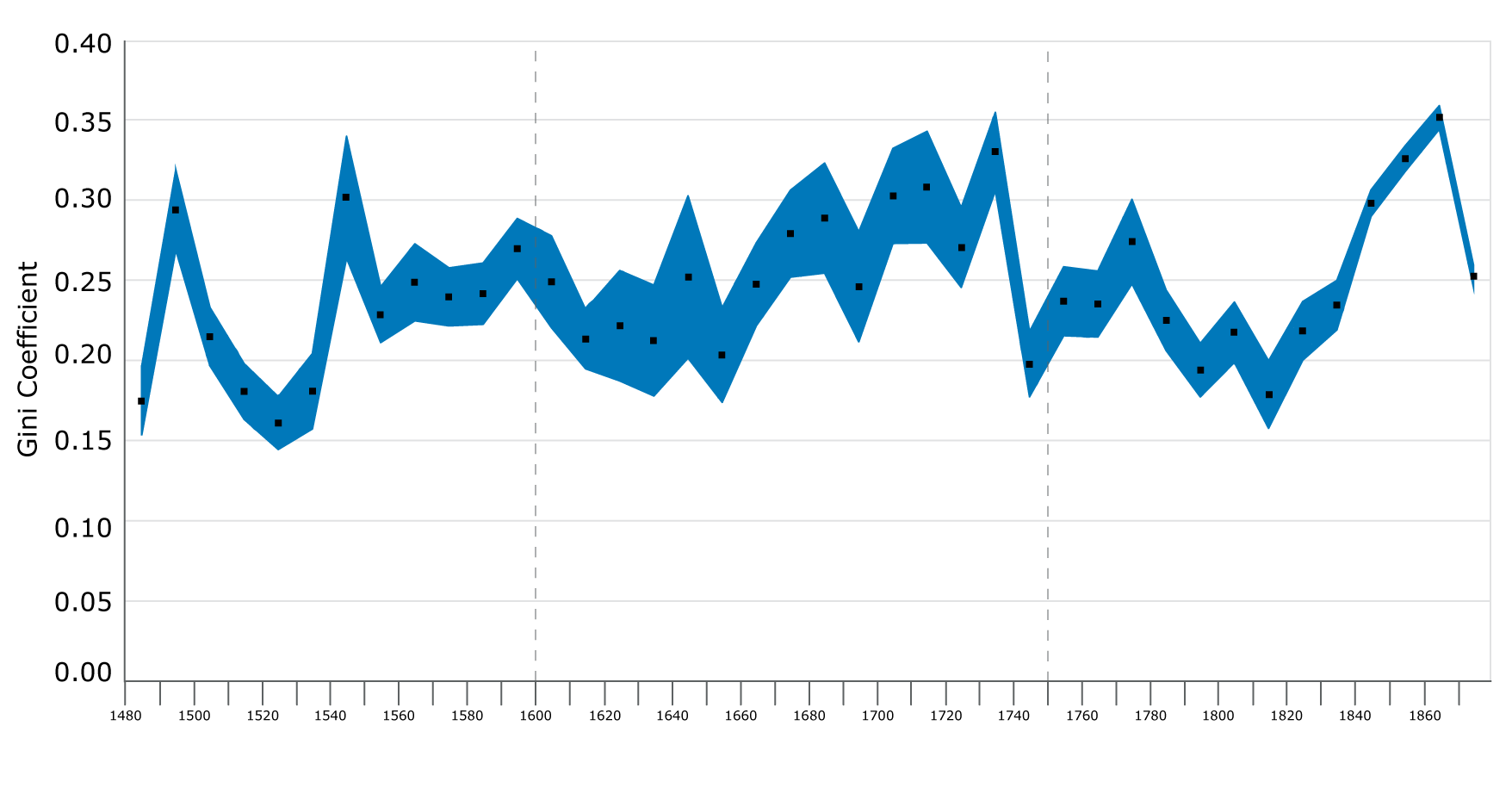This study carried out by the Centre for Demographic Studies at the Autonomous University of Barcelona (CED-UAB) and published recently in Perspectives Demogràfiques (Demographic Perspectives) estimates the evolution of economic inequality for Barcelona and its hinterland over five centuries (1481-1905). In addition, the research has assessed the wealth concentration as well as the composition and transformation of the economic elites in the long term. It concludes that inequality was higher in pre-industrial times. In the Old Regime it was explained by the dominant role of nobility, while in industrial times it was due to the weight of the day laborers. The composition of the economic elites transformed over time, from the nobility to the bourgeoisie, being the moments of economic and social transition when inequality had its highest impact.
This long-term analysis is almost unique in studies of this kind. Few places in the world count with statistical series allowing the reconstruction of socioeconomic inequality patterns for five centuries. It was possible thanks to a single documentary source and a unique database – Barcelona Historical Marriage Database – created within the framework of the Advanced Grant Five Centuries of Marriages project directed by Prof. Anna Cabré.
Economic inequality in the Barcelona area between 1481 and 1881 showed significant levels. In its evolution, three periods are defined coinciding with the main historical phases of economic development in Catalonia. Among its main results, the study shows that inequality was higher in pre-industrial periods as in Italy, the Netherlands or Portugal, which contradicts the classic view of higher levels of disparity during industrialization.

Note: In order to calculate the Gini coefficient on the basis of the concept of “ability-to-pay”, it has been necessary to transform occupations/social status into a continuous numerical value and, for this purpose, the international scale for classifying social/occupational stratification HISCAM has been used (Lambert et al., 2013). Source: BHMD and Brea-Martínez, Gabriel; Pujadas-Mora, Joana Maria (2019) "Estimating Long-Term Socioeconomic Inequality in Southern Europe: The Barcelona Area, 1481-1880". European Review of Economic History, 23(4): 397-420.
Related to the social groups that generated the inequality, the study shows how prior to the mid-18th century and especially before the 19th century, disparity was explained by the notorious contribution of the nobility. However, since industrialization inequality was caused by the impoverishment of low-skilled workers. The richest top 1% of the population went from holding 10% of the total wealth in the 15th - 16th centuries, to almost doubling it, with 17% in the second half of the 17th century. From this moment on, the concentration of wealth among the traditionally richest (nobility) begun to decline. The nobility went from representing more than 50% of the top 1% between the 15th and early 17th centuries to 10% at the end of the 18th century and during the 19th century.